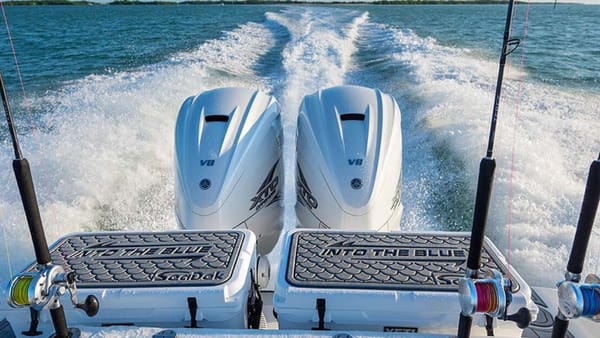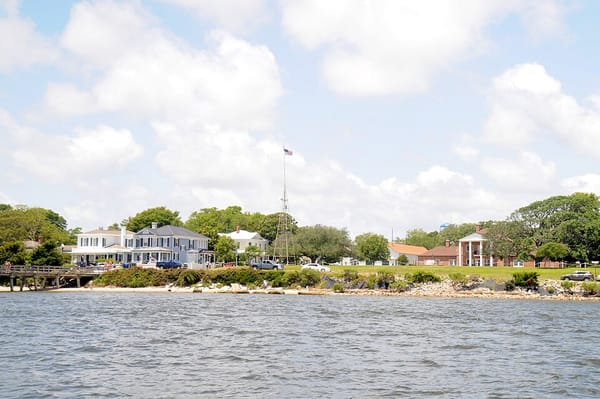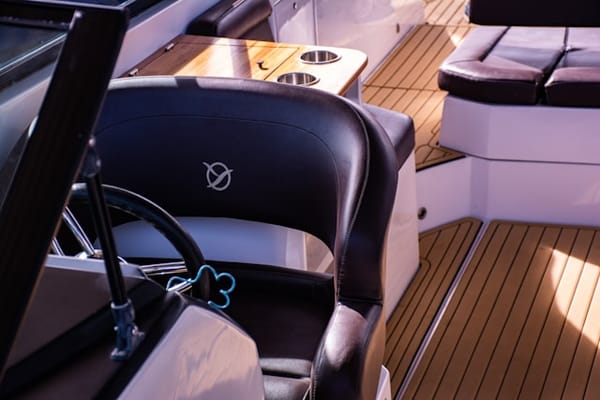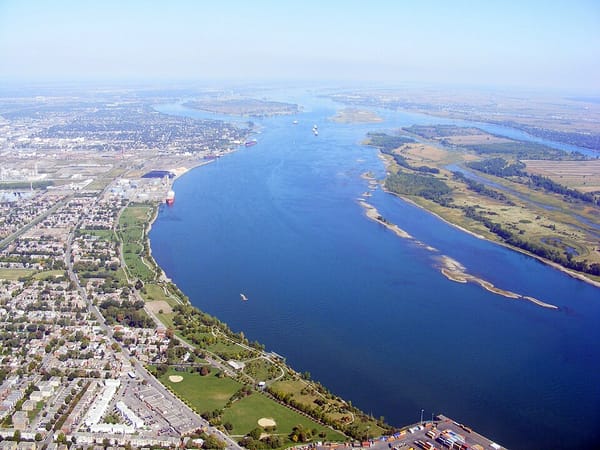Sizing And Configuring Your Dock Space For Rent

Renting out your dock through PierShare provides you with a supplementary monthly income that can help you pay your property taxes or take an extra shopping trip. But before you can enjoy the benefits of renting out your space, it's important to size and configure your dock space for rent. That way, you can get an idea of how much money you can actually make per month.
Sizing and configuring your dock space for rent determines the type of boat as well as the number of boats that can dock with you. In turn, this goes some way to determining how much money you can earn as a dock owner. To size and configure a dock, it is crucial that dock owners:
- Consider the layout of their property and the type of dock at their space;
- Measure their dock’s total available space; and
- Take into account the location of the dock.
Once you have successfully finished sizing and configuring your dock space for rent, PierShare's automated systems will take care of the rest so that you can maximize your earnings.
Layout Of The Property
When sizing and configuring your dock space for rent, the layout of the property is the first thing you should consider. The layout is essentially a high level overview of how your property is laid out so you can have a general idea of how boats will dock with you.
Linear Docks and Wraparound Properties

A fixed, wraparound dock at Peanut Island, West Palm Beach. Dock owners can have as many boats reside parallel to the dock's platform as the dock can hold.
A linear dock is simply a fixed dock that is adjacent and flush to a property. When a boat arrives at a linear dock, the vessel docks parallel to the dock’s surface. Then, it is securely fastened to pilings and/or cleats to ensure it doesn’t float away and get damaged.
The length of a linear dock varies with the length of the property. It can span either the full length of the property or be shorter than it. As a rule of thumb, a dock does not have to be as large as the boat that arrives at it, provided passengers can board and disembark safely. As an example, if a property is 85 feet wide, but a dock is 50 feet long, a 64-foot motor yacht can dock at the space.
Nevertheless, if a large boat cannot arrive at the slip due to fixed bridges, dock owners need not worry about losing out on income. By using their dock space smartly, they can rent out their dock to two (or more) smaller boats, so long as the combined length of the vessels equals the total available dock space. As an example, if a dock owner has a 150-foot property located behind a 10-foot fixed bridge, they can maximize their earnings by docking four to five 30 foot boats since these types of boats can fit under that particular bridge.
To give you an idea of how much you could earn if you have a 50 foot dock in a decent location – If you price your dock between $15 per foot per month and $20 per foot per month and all 50 feet is rented out, you can earn between $750 and $1000 monthly.
Finger Piers
Often attached to a sea wall or the waterfront edge of a property is an L- or T-shaped pier, called a ‘finger pier.’ It is a short, narrow walkway connected to the waterfront wall, and sticks out (like a finger) into the waterway. The pier can be fixed to the ground or floating.
Its main purpose is to divide the slip areas in two, so that two boats can dock perpendicular to the property rather than one boat docking parallel. Because finger piers give dock owners more total available space for boats by allowing larger boats to dock as well as multiple boats on both sides of the pier, their earnings potential is greatly increased.

Total Available Space
When listing a slip on PierShare, dock owners are encouraged to share as many details about their dock as possible. Part of this includes entering the dimensions of the dock, notably the length of the dock and the total available dock space at the dock owner’s disposal. The length of the dock is simply how long the dock is. It does not take into account any additional piers and/or if there are other boats at the dock already. This is where the total available dock space measurement comes in.
Total available space is simply a measurement of the maximum amount of room you have to rent. If, for example, your property is 85 feet wide and your dock is 50 feet, as long as boaters can safely board and disembark an 85 foot vessel from your 50 foot dock, you can host that 85-foot boat. Similarly, if you would like to host multiple small boats, you can dock between two and three 25-foot boats at your property. The key thing to keep in mind is that while you may have 85 feet of total waterfront space to rent, boaters must still be able to board and disembark the vessel from the existing 50-foot dock, whether the boats are large or small.
The Total Available Space measurement also takes into account any obstructions at your property or whether any boats are docked at your property already. In sum, Total Available Space is the principal measurement that boaters will use when browsing your listing to determine if they are able to fit at your space.
The Location Of The Dock
Where your dock is located is an additional factor in determining how much you can earn by renting your dock. Ideally, homeowners would love to own a large dock (75 feet or larger) close to the Intracoastal Waterway, in a wide water channel, with a low draft and no fixed bridges to contend with. They could rent out this space to a large catamaran or motor yacht and make $2,000 every month (if not more).
Some rare dock owners are fortunate enough to own such a dock. Others, however, have to work within certain parameters due to their location. The width of the waterway in which the dock is located, the depth of water at the dock dock, and/or any fixed bridges in the vicinity all have to be factored in when assessing how much can be earned each month.
Canal Width

Waterways around the country vary greatly in width. Excluding the bays, the lakes and the Intracoastal Waterway, water channels usually range in width from around 50ft to near 200ft.
The width of your waterway matters. If a waterway is 100 feet wide or less, you may not be able to dock a catamaran at your space since it could block more than half the channel and prevent other boats from passing through safely.
The Draft
When dock owners enter their dock’s details during the listing process, we request that they enter the precise depth of their draft at low tide. You can get a precise measurement of your low tide draft by sticking measuring tape into the water during low tide to get a precise measurement. While smaller drafts may prevent larger boats from renting out your dock, it does not affect smaller boats with smaller draft requirements.
In general, if you have 5 feet of low tide draft (or more) at your dock you can fit boats up to 60 feet. The draft requirement of a boat is usually directly proportional to its length, but it can vary by make, model and boat type. As an example, sailboats usually require large drafts due to the keel that sticks out from the hull at the bottom of the boat.
Fixed Bridges
As with drafts, fixed bridges are a feature of a dock’s surrounding area. PierShare encourages you to consider fixed bridges when sizing and configuring your dock space for rent because fixed bridges prevent some boats from staying at the docks located behind them.
For instance, dock owners between the William Lehman Causeway and the MacArthur Causeway in southeast Florida are subject to those 65ft-high bridges. They cannot rent out their slips to catamarans or sailboats with high masts as those boats simply cannot sail into those waters. Likewise, some neighborhoods have fixed bridges with vertical clearances as low as 10 feet in height. This entails that only the smallest boats can dock at slips located after these bridges.
Again, like with the draft, the vertical clearance of a bridge affects the type of boat that can arrive at the dock owner’s slip. But so long as the boat can pass under the bridge, it does not affect the number of boats from renting out the dock and could end up being more financially beneficial for dock owners.

How PierShare’s Systems Streamline the Dock Rental Process
PierShare’s forward-thinking, online platform has been uniquely designed to enable you to maximize your earnings with minimal effort. After you list your Total Available Space, the amount entered is posted on your listing. When a boat arrives at your slip, PierShare’s automated system saves you time and hassle by automatically re-calculating your remaining total available space and updating your listing so that only the right boaters submit inquiries. Combined with our secure payments system and top-notch customer support, PierShare truly is the best and only way to rent your dock.



